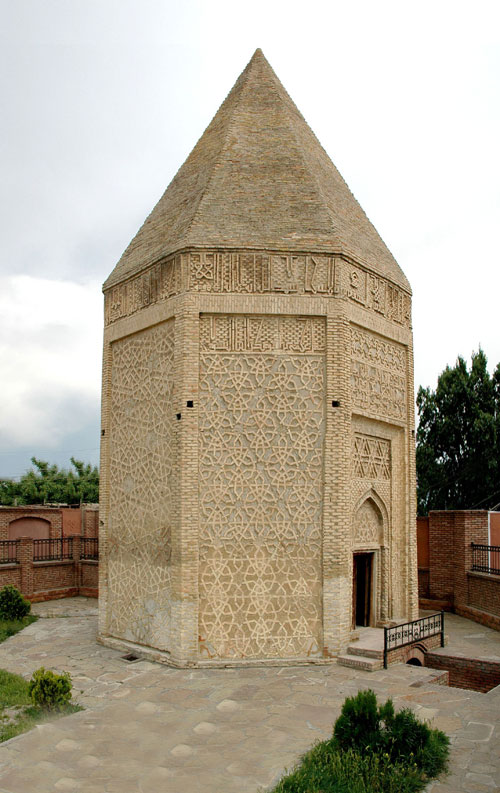THE TOMB OF YUSIF KUSEYIR OGLU
(1162)

Remarkable urbanization and laudable evolution process of Nakhchivan dates go back to approximately 5 thousand years ago. During the 12th century, new architectural tendency led to the establishment of various architectural monuments was founded in Nakhchivan. Yusif Kuseyr oglu tomb as an exquisite model of these monuments was built by the founder of this tendency, Ajami Abubakroglu Nakhchivani in the south-eastern part of Nakhchivan city in 1162. Generally known as “Atababa gunbezi” the monument consists of an underground crypt and an over ground tomb. Erecting in an eight-sided shape from inside and outside, the tomb is covered by a pyramid-shaped dome. Yusif Kuseyr oglu tomb as one of the most valuable models of Turco-Islamic cultural heritage of Nakhchivan is the unique tower-shaped tomb that preserved its pyramid-shaped dome.
In accordance to the four-line inscription over the entrance to the monument, the tomb was built in commemoration of Yusif Kuseyroglu in 557 Islamic (Hijri) Calendar (1162 CE). The 15-17th verses of “Al-i Imran” Sura of Koran were engraved on the belt around the monument, as well as the sentence saying “The work of Ajami Abubakroglu Nakhchivani, the builder” was written down on the vault of the tomb.
Yusif Kuseyroglu is introduced with a several titles and epithets like “distinguished principal”, “believer”, “beauty of Islam” and “head of sheiks” in the inscription. The position of Yusif Kuseyroglu as a chief of the city was then quite prestigious one.
The outside of the tomb was renovated in 2001.



